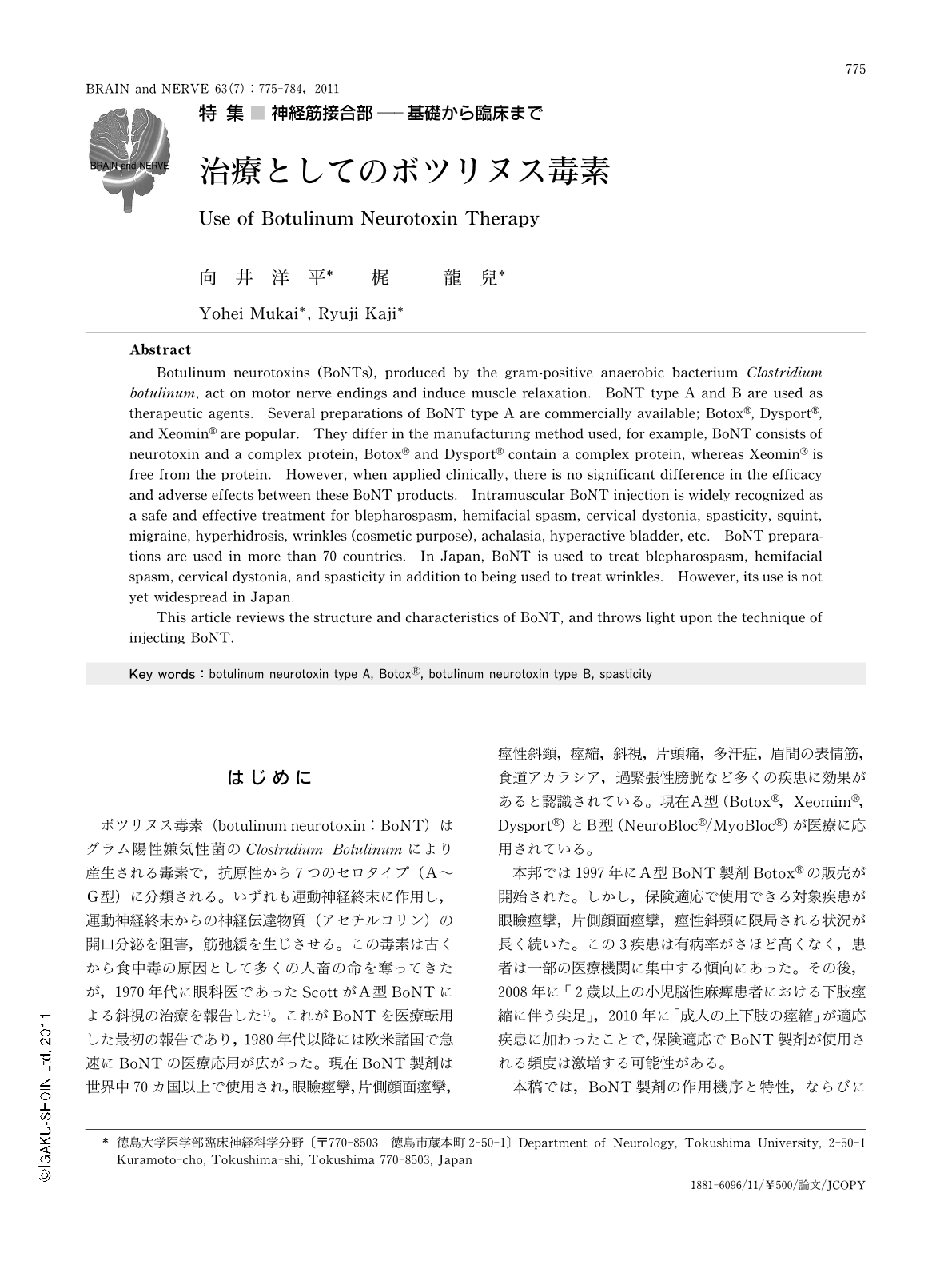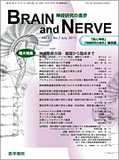Japanese
English
- 有料閲覧
- Abstract 文献概要
- 1ページ目 Look Inside
- 参考文献 Reference
はじめに
ボツリヌス毒素(botulinum neurotoxin:BoNT)はグラム陽性嫌気性菌のClostridium Botulinumにより産生される毒素で,抗原性から7つのセロタイプ(A~G型)に分類される。いずれも運動神経終末に作用し,運動神経終末からの神経伝達物質(アセチルコリン)の開口分泌を阻害,筋弛緩を生じさせる。この毒素は古くから食中毒の原因として多くの人畜の命を奪ってきたが,1970年代に眼科医であったScottがA型BoNTによる斜視の治療を報告した1)。これがBoNTを医療転用した最初の報告であり,1980年代以降には欧米諸国で急速にBoNTの医療応用が広がった。現在BoNT製剤は世界中70カ国以上で使用され,眼瞼痙攣,片側顔面痙攣,痙性斜頸,痙縮,斜視,片頭痛,多汗症,眉間の表情筋,食道アカラシア,過緊張性膀胱など多くの疾患に効果があると認識されている。現在A型(Botox®,Xeomim®,Dysport®)とB型(NeuroBloc®/MyoBloc®)が医療に応用されている。
本邦では1997年にA型BoNT製剤Botox®の販売が開始された。しかし,保険適応で使用できる対象疾患が眼瞼痙攣,片側顔面痙攣,痙性斜頸に限局される状況が長く続いた。この3疾患は有病率がさほど高くなく,患者は一部の医療機関に集中する傾向にあった。その後,2008年に「2歳以上の小児脳性麻痺患者における下肢痙縮に伴う尖足」,2010年に「成人の上下肢の痙縮」が適応疾患に加わったことで,保険適応でBoNT製剤が使用される頻度は激増する可能性がある。
本稿では,BoNT製剤の作用機序と特性,ならびにBoNT製剤を使用するうえで役立つ知識を紹介する。
Abstract
Botulinum neurotoxins (BoNTs), produced by the gram-positive anaerobic bacterium Clostridium botulinum, act on motor nerve endings and induce muscle relaxation. BoNT type A and B are used as therapeutic agents. Several preparations of BoNT type A are commercially available; Botox®, Dysport®, and Xeomin® are popular. They differ in the manufacturing method used, for example, BoNT consists of neurotoxin and a complex protein, Botox® and Dysport® contain a complex protein, whereas Xeomin® is free from the protein. However, when applied clinically, there is no significant difference in the efficacy and adverse effects between these BoNT products. Intramuscular BoNT injection is widely recognized as a safe and effective treatment for blepharospasm, hemifacial spasm, cervical dystonia, spasticity, squint, migraine, hyperhidrosis, wrinkles (cosmetic purpose), achalasia, hyperactive bladder, etc. BoNT preparations are used in more than 70 countries. In Japan, BoNT is used to treat blepharospasm, hemifacial spasm, cervical dystonia, and spasticity in addition to being used to treat wrinkles. However, its use is not yet widespread in Japan.
This article reviews the structure and characteristics of BoNT,and throws light upon the technique of injecting BoNT.

Copyright © 2011, Igaku-Shoin Ltd. All rights reserved.


